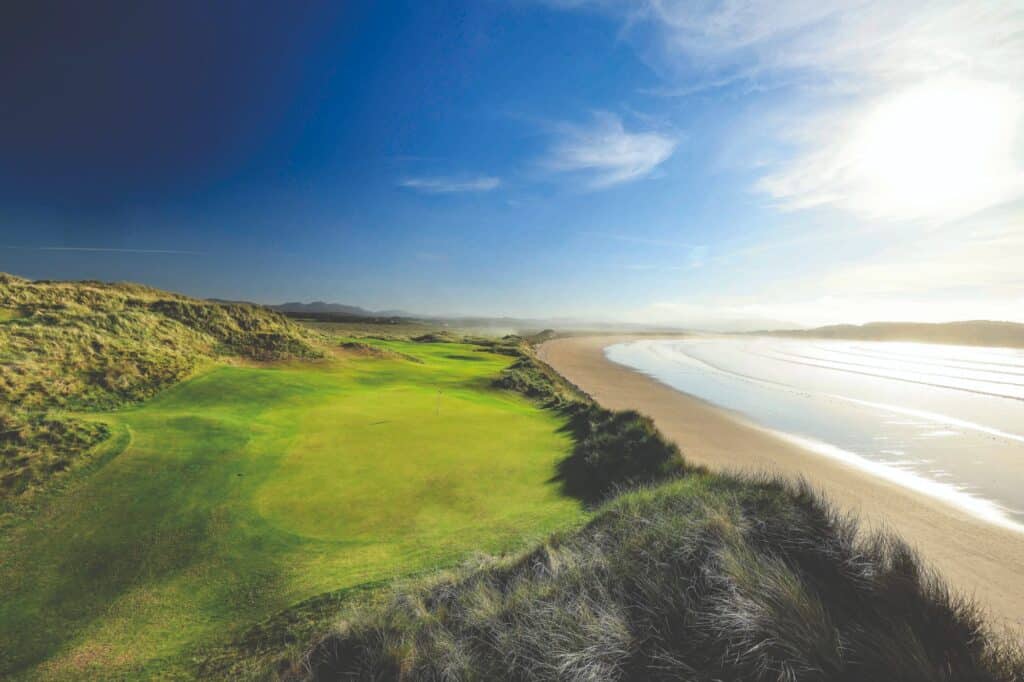Watching professional golf these days, so often seems to be an exercise in who is going to dismantle the course best this week. It often leaves us viewers wanting the course to be more of a challenge for the world’s best golfers. But, for as long as elite players have continued to stretch golf courses to their limits, it is often us club golfers who suffer the most.
Listen to the NCG Top 100s Podcast
- ALSO READ: What are the Point of Bunkers?
- ALSO READ: Pests and diseases on golf courses: How bad is it going to get?
- ALSO READ: The difference in culture between US and UK golfers was made abundantly clear during the Internet Invitational cheating row
After watching the pros dismantle the Jumeirah Golf Estates golf course with an eye-watering winning score of 18 under par, you’ll be forgiven for thinking it’s easy but it’s not. The reality is us mere mortals would struggle there but the pros find it easy. something has to give on that front.
In the latest episode of the NCG Top 100s Podcast, Tom Irwin and Dan Murphy discussed what actually makes a golf course difficult. They digest why many clubs, championship venues included, have been making the wrong changes for decades now.
They came together to explore different ways to make golf courses more of a challenge for the world’s best players, without sacrificing the fun and ability for everyday golfers to enjoy them. Here’s what golf courses around the world have been getting wrong and should be doing instead…
1. Length
Lengthening a golf course has long been the knee-jerk method for protecting it from powerful players. But as Murphy explains, it’s an arms race you simply cannot win: “Every golf course we care about has been lengthened. But I don’t think making it longer makes any difference at all to the best players in the world.”

Irwin agrees, noting that to genuinely force long-iron approaches back into the modern game, you’d need to make golf courses absurd long and unplayable for 99.9% of golfers. “If you’re trying to ask a Tour pro to hit every club in the bag, you’re talking about a golf course that’s like 8,000-plus yards long,” he said.
Advertisement
In some ways length has diminishing returns most of the time. It makes golf slower, more expensive, more environmentally demanding. But above all, it makes it easier for long hitters, who simply hit shorter irons from further down. It’s the rest of us that get punished at longer golf courses.
2. Rough
Fans love to call for US Open rough at more golf championship venues. But the reality is this is a complete nonsense.
“Who on earth wants to spend their time on a golf course gouging it out of rough?” Murphy said. “It’s just an unbelievably dull pursuit… and it hurts the amateur player far more than the pro.”

Bryson DeChambeau already proved this point a few years back when he claimed his first US Open victory. “There was the Winged Foot example,” Irwin referred to. “Bryson won the US Open by hitting driver all of the time, he was basically like a long-drive champion knobbing it on the green from the rough. It was the opposite of what people thought would happen.”
3. Firmness
“When it comes to it, the answer is firmness,” Murphy claimed. “It takes us away from this obsession with distance and power and starts getting us into subtlety.
“If that green is firm, suddenly the angle becomes important, you’ve lost control, and you don’t know where your ball’s going to stop. And that’s when you have to think more carefully about where you hit it off the tee.”
Irwin pointed out that: “When the ground is firm, all of a sudden you’ve brought in the requirement to consider the angle again.”
Advertisement
Firmness brings two things Tour pros hate; uncertainty and having to play angled shots. It makes them think, improvise, and problem-solve. Three things golf is and should be about in deciding the best golfer at each event.
4. Angles
Much of modern golf, especially on the PGA Tour, hit it high, land it soft, stop it close.
“You get this idea about always hitting driver, or aiming to the fat part of the green, but that only works on soft, parkland courses where the ball doesn’t move,” Irwin pointed out.
If you have a firmer golf course that means golfers need to think about playing for position more. And then if you do hit it in the wrong places with a worse angle into the greens, then the best will get punished like the rest of us.
5. Weather
Tour pros love predictability. For the most part, that is what they get all season long. “Tour pros only ever play in the height of the season, in perfect conditions, which are all reducing variables,” noted Murphy.
Events like The Open, so often deliver the variance of challenge golf desperately needs. It is a tournament that requires golfers to embrace the weather if they want to be The Champion Golfer of the Year.

Murphy recalled how the challenge of Troon delivered exactly that a fews back. “There were eagle chances and then other holes where par was the most amazing score,” he said. “It asked all of the questions.”
We’re not talking about the need for extreme weather here. 12–18mph wind and firm turf will challenge the world’s best.
6. Big Greens and Extreme Pin Positions
One of the most club-friendly ways to challenge elite players is to build large greens with complex internal contours. Irwin points to St Patrick’s Links as an example.
“You’d hit a bad tee shot and think, ‘I’m alright, it’s just over there’, then you’d watch it ping off something and eventually realise it’s because you were 60 yards out of position.”
Advertisement

“I really like that as a design strategy,” Murphy agreed. “It gets everyone in the game, but still asks the better player to find the right section.”
7. No Need for Water Hazards
“Water is the ultimate one-dimensional hazard,” said Murphy. “You’re either in it or you’re not.”
Irwin added: “You can’t get up and down out of a pond, it’s just not golf.”

Are we sure they’re any different from internal out of bounds for adding anything to the strategy? They’re just not an enough of a meaningful defence. They look better than what they deliver, a bit of eye candy at best.
Final Thoughts
Murphy said it best: “The best golf courses separate players. The worst ones give everyone the same score.”
It’s time golf realised what truly makes each course a test for golfers of all abilities and stop fixating on meaningless commodities like length and distance. Make it a game of fine margins and strategy again and watch golf’s elites struggle once more.
Listen to the NCG Top 100s Podcast
Also available on:
Spotify: Listen Here
Apple Podcasts: Listen Here
Amazon Music: Listen Here
Acast: Listen Here
Advertisement
